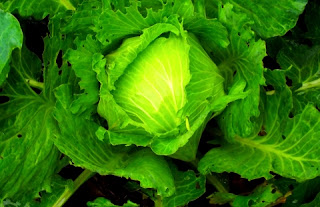 |
| Cabbage Garden Culture and Uses |
Planters usually sow cabbage seed from ten to twelve weeks before the last frost date in the spring. After germination and the emergence of the first true leaves, the seedlings are transplanted to larger containers. Then they are moved to a hot bed or cold frame. Cabbage is frost tolerant and the seedlings may be set out in the garden about four weeks before the last spring frost. The heads develop from between fifty to ninety days or more, depending upon the variety. Gardeners will find three main maturity groups, early (50 - 60 days), mid season (60 - 75 days) and late season (75 days or more). Planting a few of each maturity ensures a longer harvest. Usually the cabbage plants will grow smaller, secondary heads after the main head is harvested. These will be much smaller, but still quite good.
 |
| Gardeners Guide to Growing Cabbage in the Vegetable Garden |
Gardeners willing to grow their own seedlings will have a much greater varieties available. Locally grown seedlings are usually best for purchase. Local nurseries will grow the best types for their region.
Fall Crop
It is also possible to grow cabbage as a fall crop. Sow seed in late spring to early summer and plant in the garden in mid to late summer. Pest populations are high during this time. The gardener needs vigilance to prevent cabbageworms from devouring the young seedlings. The gardener must also maintain adequate moisture levels, in the summer heat. This is true especially when the seedlings are small. Most cabbage varieties make good fall crops, as the heads seem to get sweeter when nipped by the first autumn frosts.
Five Categories
There are five main categories of cabbage:
Savoy – Characterized by crimped or curly leaves, mild flavor and tender texture
Spring Greens – Loose-headed, commonly sliced and steamed
Green – Light to dark green, slightly pointed heads. Greens are the most common type grown.
Red – Smooth red leaves, often used for pickling or stewing
White, also called Dutch – Smooth, pale green leaves
